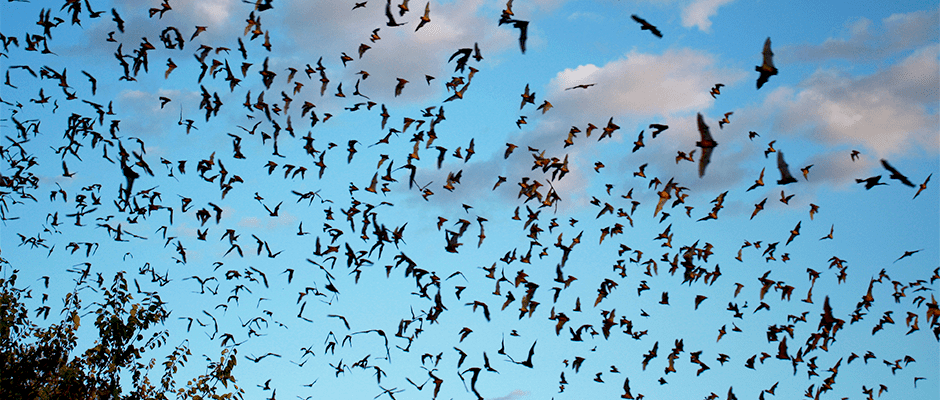Share this article
JWM: Bats respond differently to abandoned mine gates
About 80,000 abandoned mines remain in the landscape of the Southwest. These sites can be dangerous to people that come across or enter them, but bats use these abandoned mines for their colonies.
In an effort to both protect people and allow bats to use these mines, gates are often put up. Researchers recently looked at how different bat species respond to these gates.
In a study published in the Journal of Wildlife Management, a research team led by Abigail Tobin found that while bats may react negatively to gates at first, overall — in the long term — the gates are not detrimental to most bats.
The team first conducted a mock gate experiment, placing fake gates outside mines and recorded the bats’ behavior. When gates are initially erected, they found, bats tend to respond negatively, hitting the bars or flying around to investigate. “The immediate finding was the bats don’t like change really,” said TWS member Carol Chambers, a professor of wildlife ecology at Northern Arizona University and a coauthor of the study. “It’s like someone came in and changed something in your house.”
But during a second part of their study a year and a half later, the team worked with state and federal agencies to look at mines the agencies intended to gate. They studied the bats’ use of mines before and after putting gates up to get a better long-term response of the bats. The team found the bats adjusted better as time went on, but there were some situations where some bats just weren’t adjusting. They suggested in these situations, maintaining entrance dimensions when installing a gate helps provide access to the bats and preserves the roosting conditions of the mine.
As part of the research, the team also collected guano and completed genetic testing to determine which species were present in mines that were and were not gated in Nevada, Colorado, Utah, Arizona and New Mexico. They then combined the information with visual data.
Overall, the team found the types of gates in the mines did not have a big impact on bat species present, meaning that they were successful in letting bats in. Instead, factors such as elevation and the number of mine levels and entrances played a much bigger role than gates. But they also that while most bats adapted to the gates, some species were bumping into gates more, including the fast but less agile Mexican free-tailed bat (Tadarida brasiliensis).
The information should be used by state and federal agencies so they can understand which types of gates are needed to protect different bat species, Chambers said.
“Our takeaway is the initial response of bats is negative, the midterm is neutral and the long-term response tended to be more positive and accepting of gates,” Chambers said. “We caution there are some bats in which gates won’t work. It’s not perfect for everything.”
Header Image: Mexican free-tailed bats exit Bracken Bat Cave in Texas. Researchers found this species has a harder time adjusting to gates at the entrance of abandoned mines. ©USFWS/Ann Froschauer








